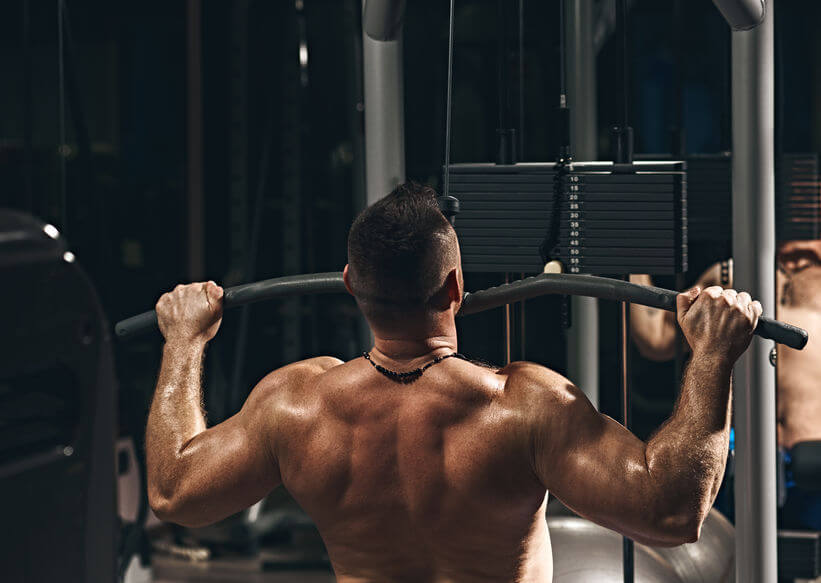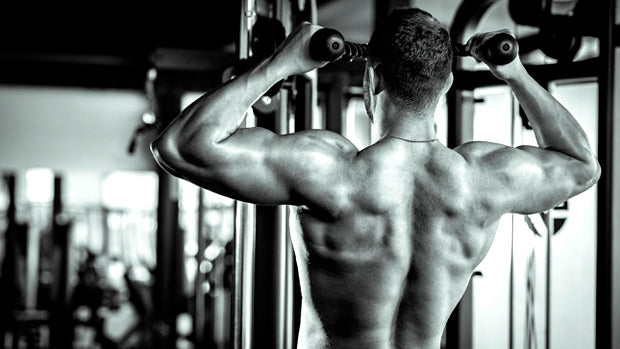
If you're looking to improve your posture, relieve nagging shoulder pain, and build a strong, balanced upper body, the face pull should be at the top of your exercise list. This often-overlooked movement is a powerhouse for targeting muscles that are crucial for optimal shoulder function and alignment.
What is the Face Pull?
The face pull is a simple yet effective exercise that involves pulling a resistance band, cable, or rope attachment towards your face in a vertical or diagonal pattern. Despite its straightforward nature, the face pull is a compound exercise that works several major muscle groups simultaneously.
Face Pull Muscles Worked

- Rear Deltoids: The rear heads of the shoulder deltoids are the prime movers, contracting to pull the weight or resistance towards your body.
- Rotator Cuff: The four rotator cuff muscles (supraspinatus, infraspinatus, teres minor, and subscapularis) work together to stabilize and rotate the shoulder joint.
- Rhomboids: These upper back muscles retract and squeeze the shoulder blades together during the pulling motion.
- Trapezius: The trapezius muscles, especially the middle and lower traps, assist in upward rotation and depression of the scapulae.
Benefits of Face Pulls
Improved Posture
Face pulls strengthen the muscles responsible for retracting the shoulder blades, which can help counteract the forward shoulder posture that many people develop due to excessive sitting and poor posture habits.
Shoulder Health
By targeting the rear deltoids and rotator cuff muscles, face pulls help to strengthen and stabilize the shoulder joint, reducing the risk of shoulder injuries and imbalances.
Enhanced Upper Back Development
Face pulls effectively target the muscles of the upper back, including the traps, rhomboids, and rear deltoids, leading to improved muscle definition and strength in this area.
Better Athletic Performance
Strong rear deltoids and upper back muscles are essential for optimal performance in sports and activities that involve throwing, swinging, or pushing movements.
Injury Prevention
Strengthening the muscles of the upper back and shoulders through face pulls can help prevent common injuries such as shoulder impingement, rotator cuff strains, and upper back pain.
How to Do Face Pulls?
-
Setup: Attach a rope handle to a cable machine at chest height. Stand a few feet away from the machine, holding one end of the rope handle in each hand with a neutral grip.
-
Positioning: Take a step back to create tension in the cable. Stand with your feet shoulder-width apart, knees slightly bent, and core engaged. Maintain a tall posture with your chest up and shoulders down and back.
-
Execution: Begin the movement by pulling the rope handles towards your face, leading with your elbows. Keep your wrists straight and your hands close to your ears throughout the movement. Squeeze your shoulder blades together at the end of the motion.
-
Controlled Release: Slowly return the rope handles to the starting position, allowing your arms to fully extend without locking out your elbows. Maintain tension in the muscles of your upper back throughout the movement.
-
Breathing: Inhale as you extend your arms and prepare to pull the handles towards your face. Exhale as you pull the handles towards your face and squeeze your shoulder blades together.
4 Variations of Face Pulls
High Cable Face Pulls
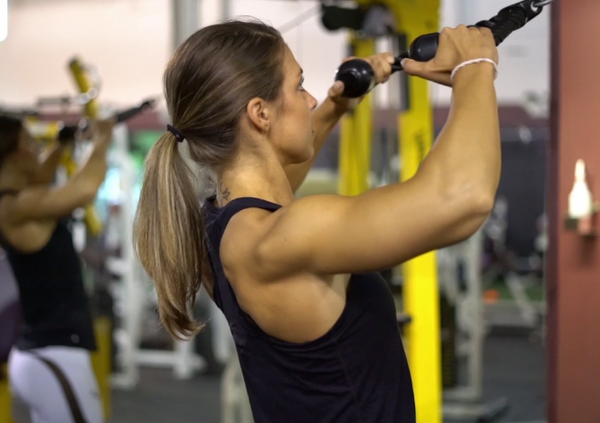
Perform face pulls with the cable attachment positioned above head height to target the upper traps and rear deltoids.
Banded Face Pulls
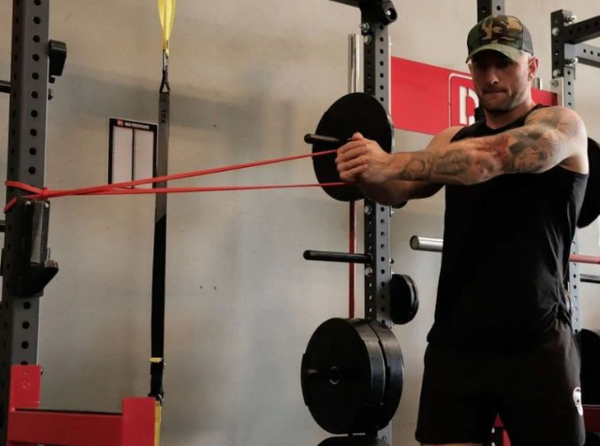
Use a resistance band instead of a cable machine to perform face pulls, allowing for greater freedom of movement and a more challenging resistance curve.
Seated Face Pulls
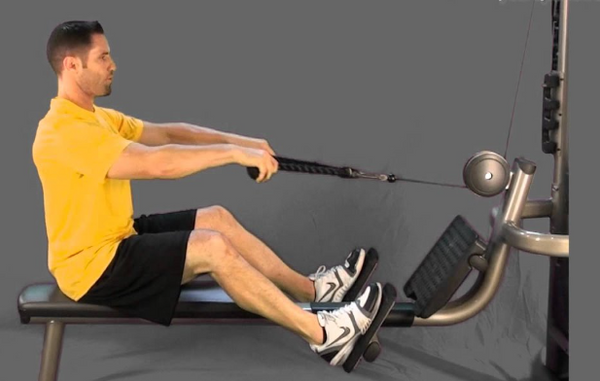
Perform face pulls while seated on a weight bench or chair, focusing on maintaining proper posture and engaging the core throughout the movement.
Single Arm Face Pulls
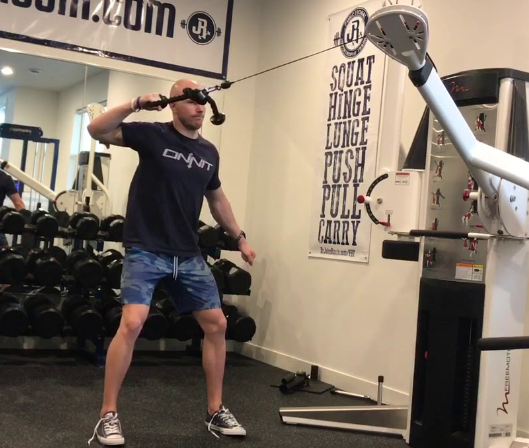
Perform face pulls one arm at a time to isolate each side of the body and address any muscle imbalances.
Precautions for Face Pull

When pulling up, think about letting the main force come from the contraction of the deltoid muscle, not by shaking the body. When pulling up, the waist and abdomen should be tightened, and the trunk should not be shaken as much as possible to maintain balance.
Note: When pulling up, do not pinch your arms with your arms. There should be a distance. Fully stretch your shoulders backward and pull your upper arms up as high as possible.
Common Mistakes
Poor training habits are a key point that makes it difficult for you to improve! Especially if you haven't noticed! Although some mistakes will not cause you to be injured! But one thing is certain is that it will greatly reduce your training effect, and sweat in vain!
In the single-joint chest exercise, the rope clamp chest is everyone's favorite! But many people made the same mistake in the action!
Mistake 1: Move your elbows!
The movements of all single joints of the chest have one thing in common: the elbows are locked, and they continue to maintain a slightly bent position during exercise (shoulder adduction). In other words, the degree of bending of the elbow needs to remain the same throughout the movement, just like drawing an arc to hug a wooden barrel or a tree.
However, many people changed their elbow position during the process, especially extending their arms at the bottom of the action. The problem is that your flying bird uses too much weight. This problem is especially common when it is too heavy. But the problem is that the rope bird is essentially a single-joint movement, which is made into multiple joints by you, which means that the triceps and shoulders are doing some work that the chest should do.
Solution: Don't covet weight, use lighter weight to move! The elbow joint is always fixed!
Mistake 2: Keep your feet together
Many people would stand with their feet close together when doing a rope clamp! This will make you unable to stabilize your body! Nor can it maintain balance with the change of the center,
Solution: Use lunge (cross-step), cross step will bring you a more stable platform! Let you focus on the contraction of the pectoral muscles!
Mistake 3: No multi-angle
This is the most common problem that many people use rope clamps, they always fix the roller skates at the same height! This is not a wise move!
By moving the pulley from high to low, you can change the angle of the force on the chest fiber. In this way, you can exercise the entire chest muscles, and you can also focus more on strengthening your weak parts.
The higher position focuses more on the lower edge of the pectoral muscle, and the lower position focuses more on the muscle fibers of the upper part of the chest. The middle position can better target the muscles of the middle pectoral muscle!
Solution: Mix them up! Don't always use the same angle to exercise! One method is to switch between various high points and low points, and the other is to change the position for some time!
No matter how you choose to include it, the face pull is an exercise that deserves a regular spot in your training regimen. By prioritizing this often-overlooked movement, you'll be well on your way to improved posture, increased shoulder health, and a balanced, sculpted physique.

